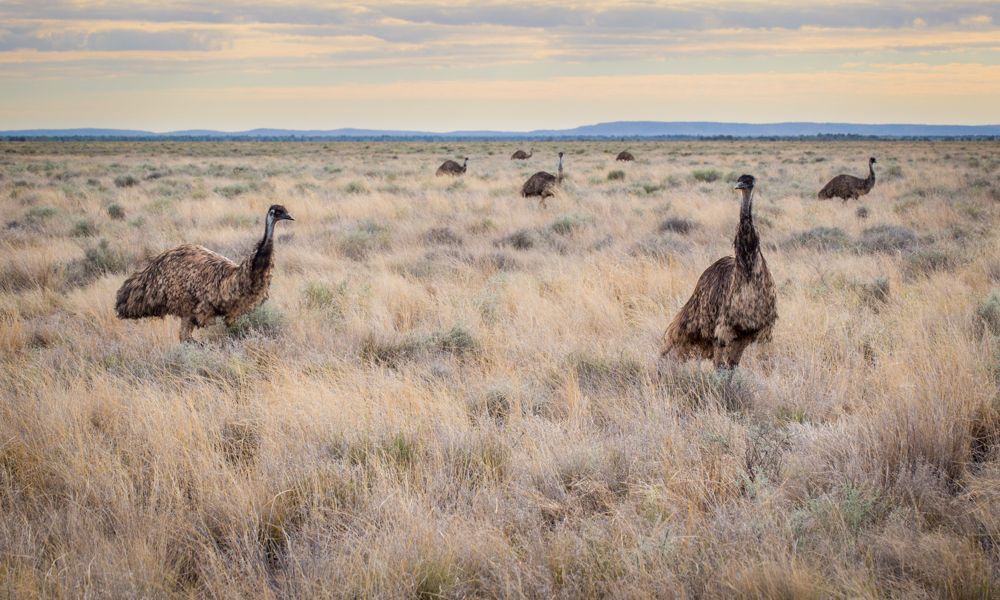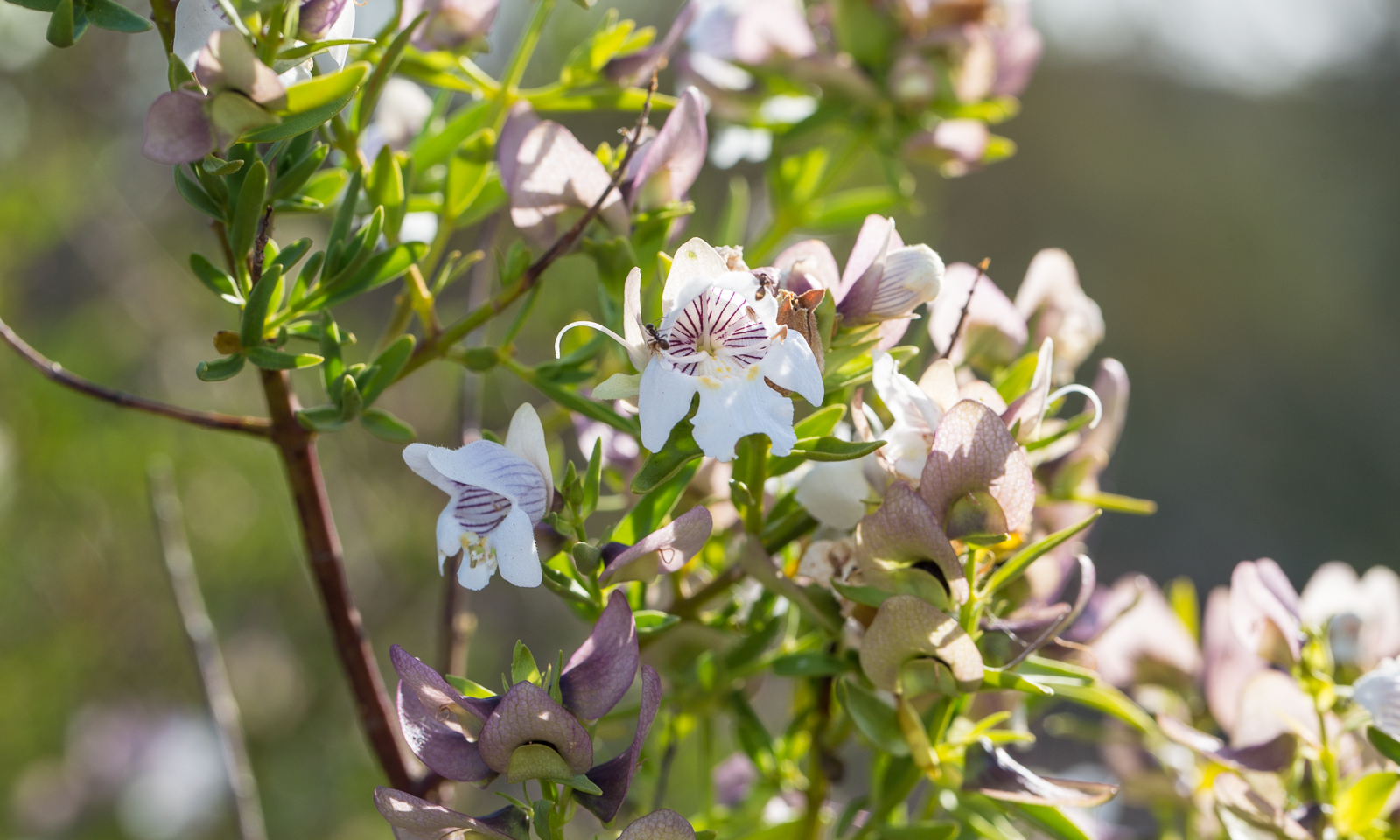
I like it when I understand enough about a plant family to recognise a plant as belonging to it.
Lamiaceae is one family that I get. There are a few reasons.

Lamiaceae is also known as the ‘Mint-family’. Mint (Mentha) is a member and like mint most of Lamiaceae’s species have aromatic leaves. And what aromas! Rosemary (Rosmarinus), Thyme (Thymus), Sage (Salvia), Basil (Ocimum) and Oregano (Origanum) are all Lamiaceae plants.

Lavender (Lavandula) you ask? Yes, most definitely Lamiaceae.
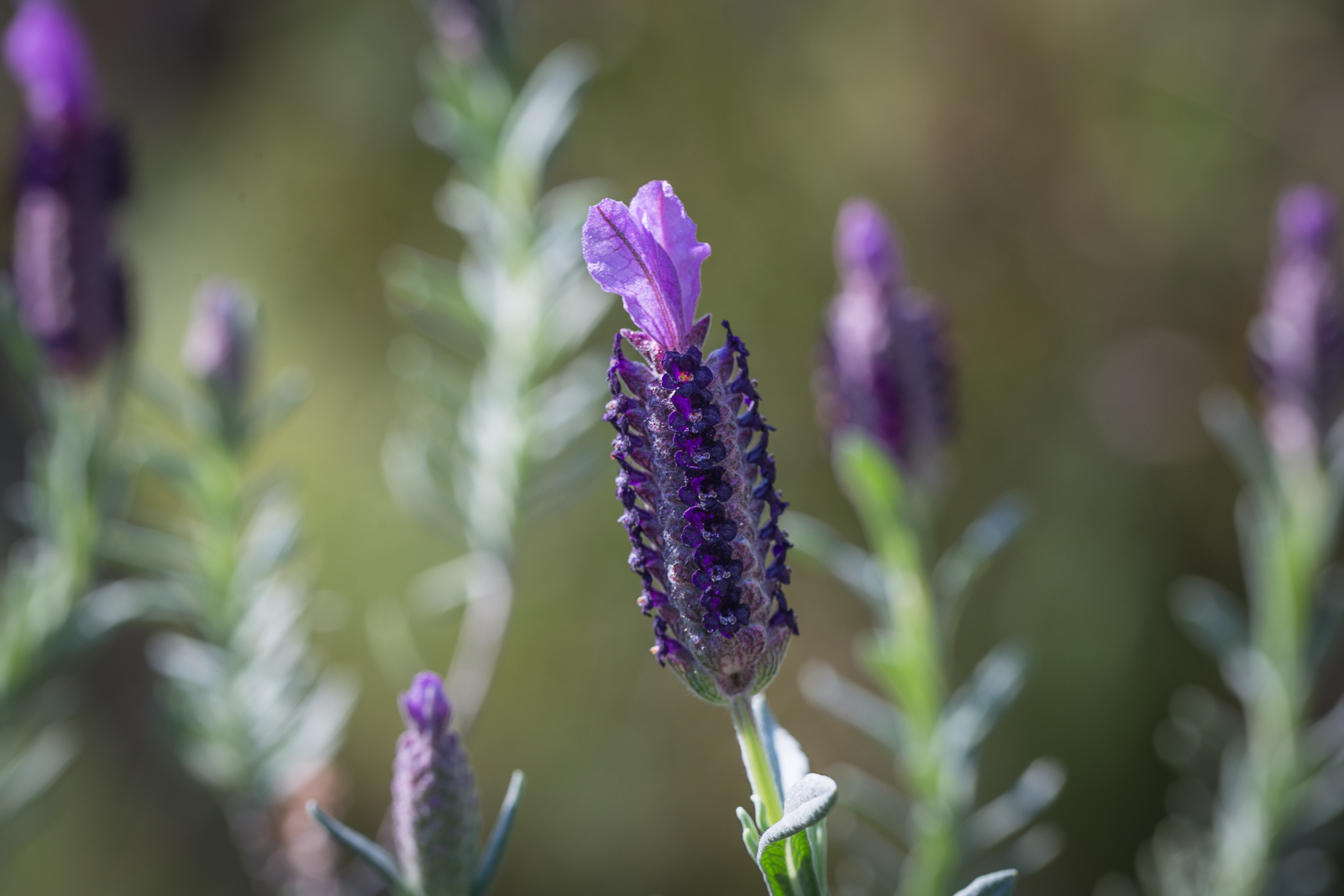
But, there are more than 7000 Lamiaceae species worldwide, making it the 7th largest plant family.
One of Lamiaceae’s 44 Australian genera is the native genus Prostanthera or Mint-Bush which has an unbelievably wonderful aroma. It is a fantastic plant for gardens. Enjoy the smell as you rub up against it or crush some leaves. Prostanthera occurs widely from alpine to arid areas.
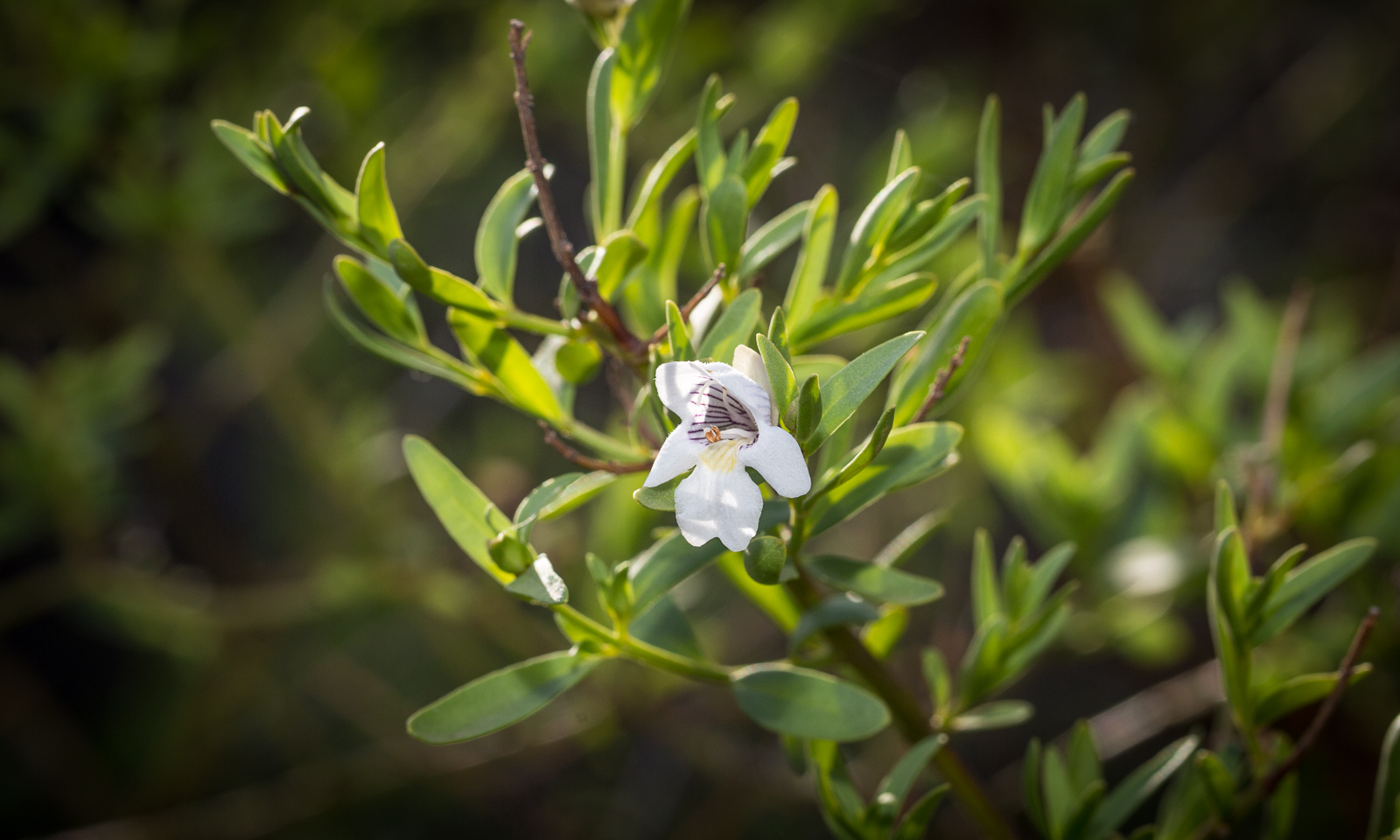
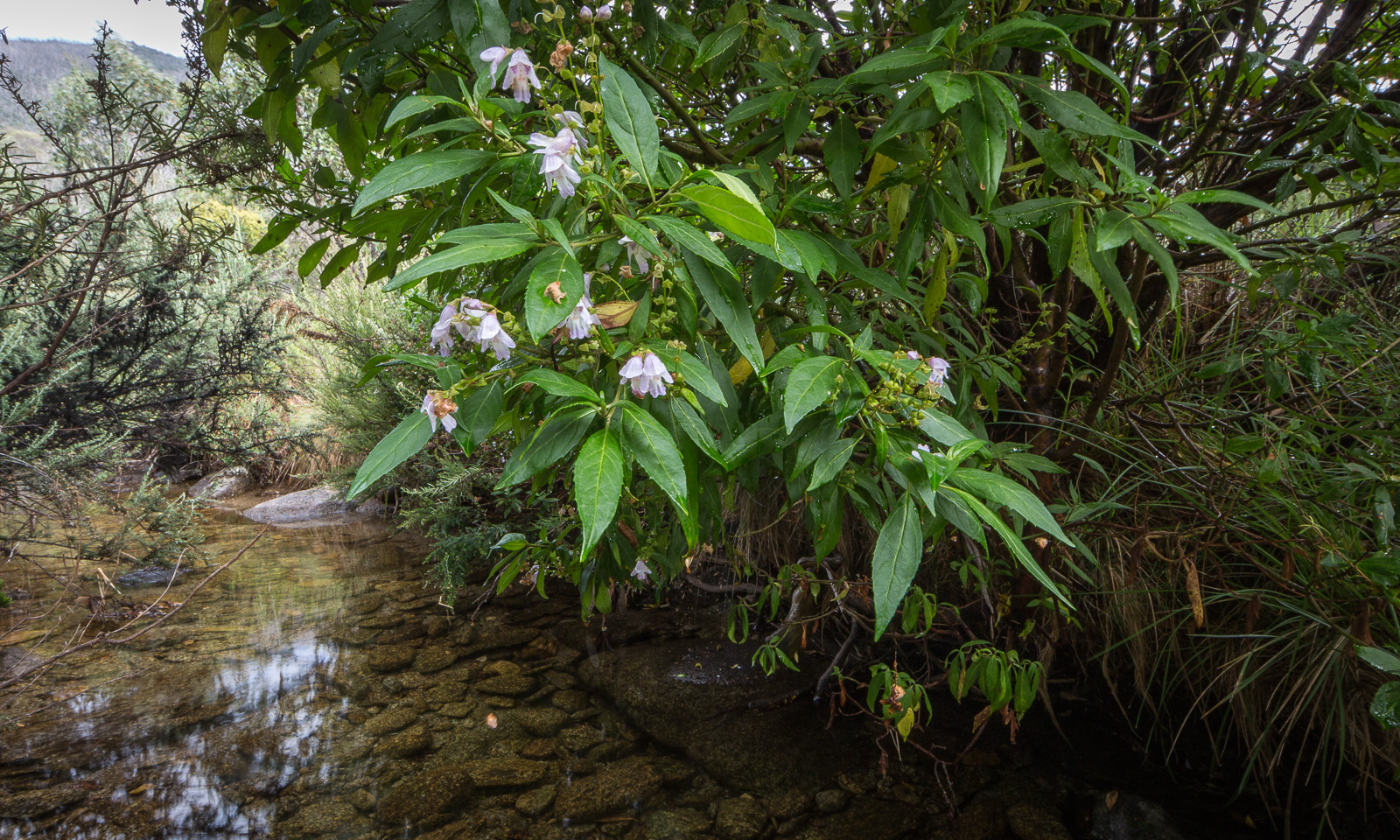
A well known native is Westringia fruticosa which is often used in landscaping, but is naturally found hanging on rocks exposed to the sea in the harshest conditions. Its common name is Coastal Rosemary but unlike Rosemary and most other Lamiaceae species, Westringia fruticosa has no aroma.
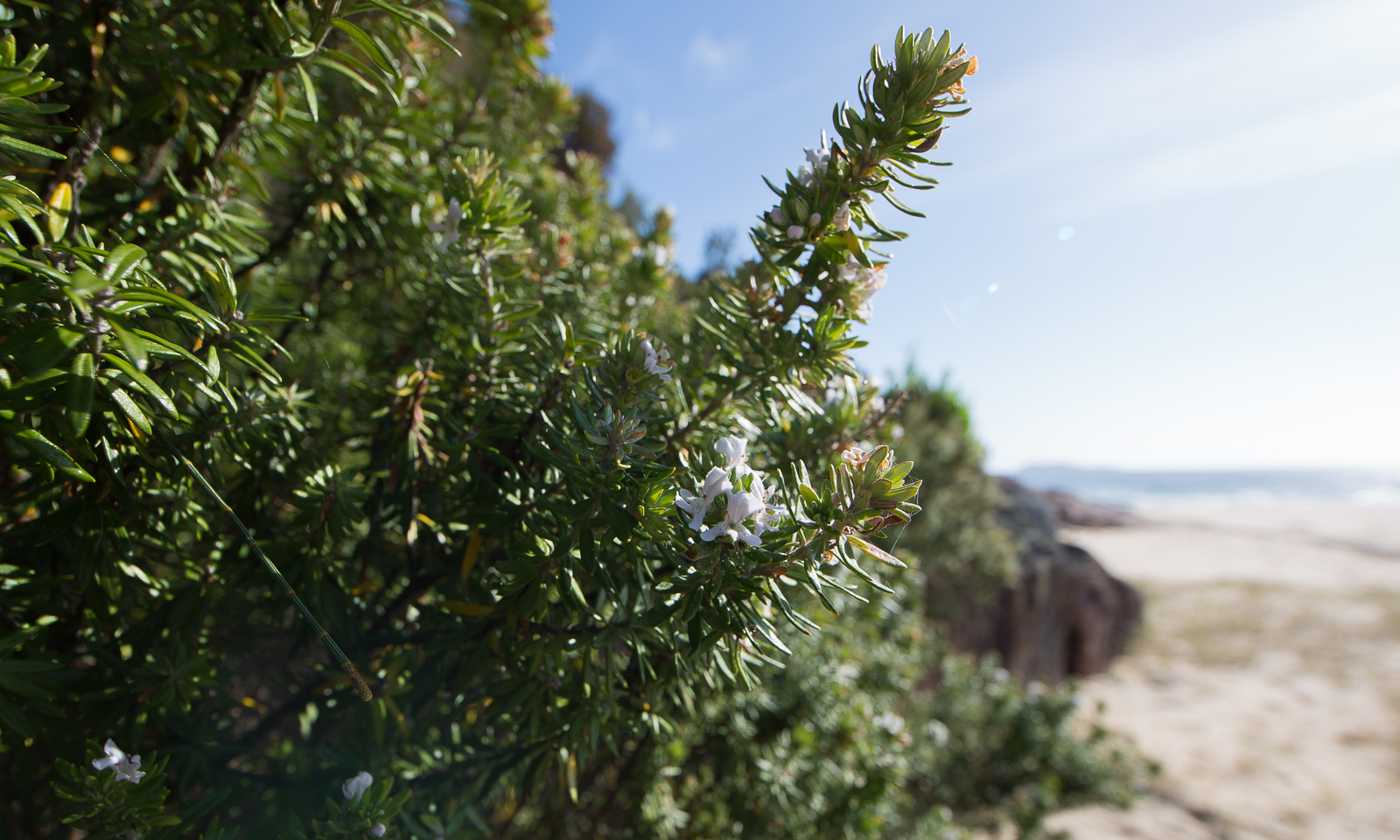
The family is quite recognisable. The plant below is growing in coastal heath in Yuraygir National Park on the NSW north coast. It looked to me like Lamiaceae, but I didn’t know the genus or species. I asked Trevor Wilson from the Botanic Gardens in Sydney who is studying the genus Prostanthera and he identified it as Chloanthes parviflora. Chloanthes is a genus of Lamiaceae.
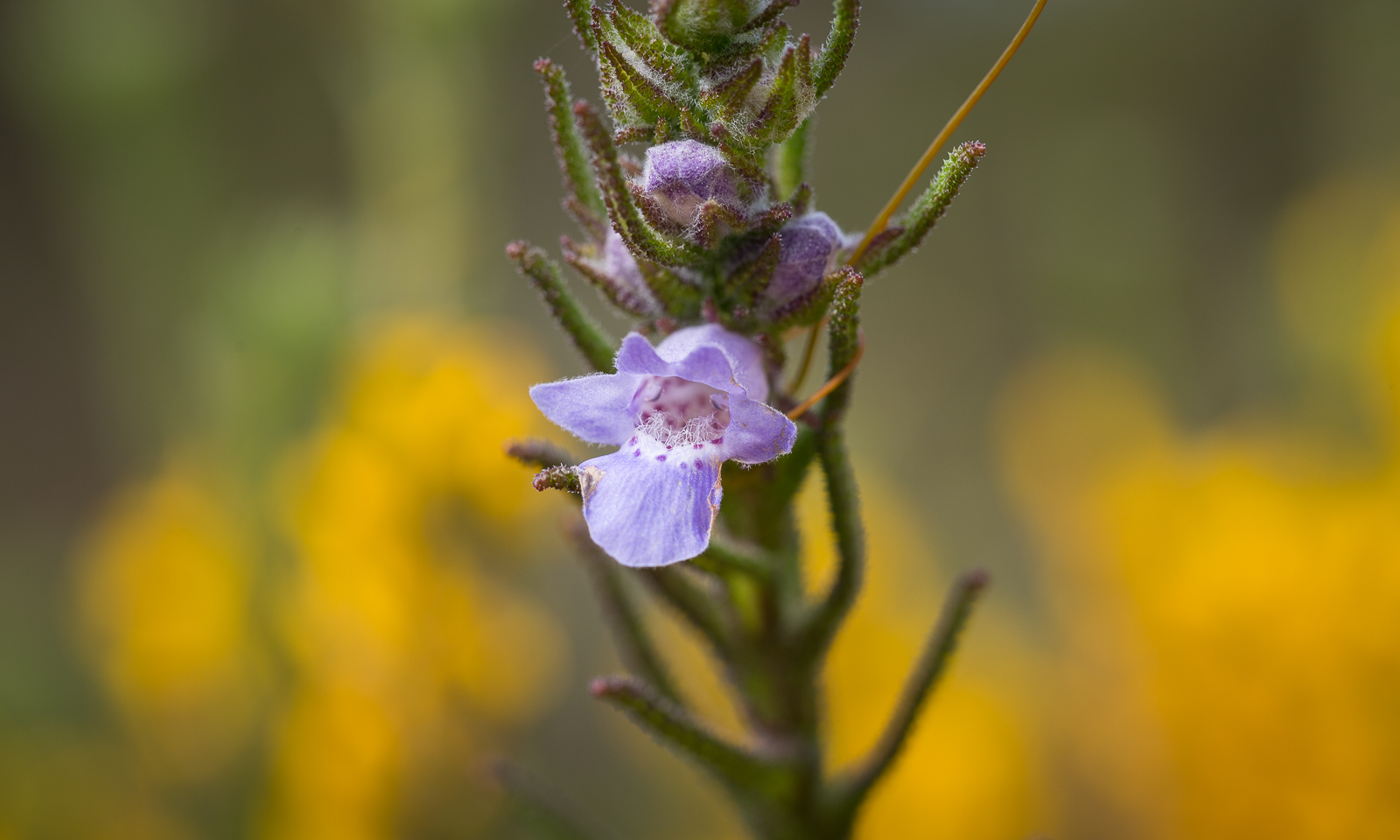
Or in the arid zone another species from a different genus Teucrium occurs – but again the flowers look like Lamiaceae.

Lamiaceae flowers are quite distinctive. They are zygomorphic (bilaterally symmetrical) and they are labiate. Labiate means that one or more petals can form a lip (Clarke and Lee, 2002). They have 2 or 4 stamen.
Lamiaceae stems are usually square shaped. If you run your fingers along a stem of Rosemary or Westringia for example you can feel the ridges.
The leaves are usually opposite.
So when I see labiate flowers, I grab some leaves and take in the aroma. I rub the stems – feeling the square shape and think Lamiaceae!
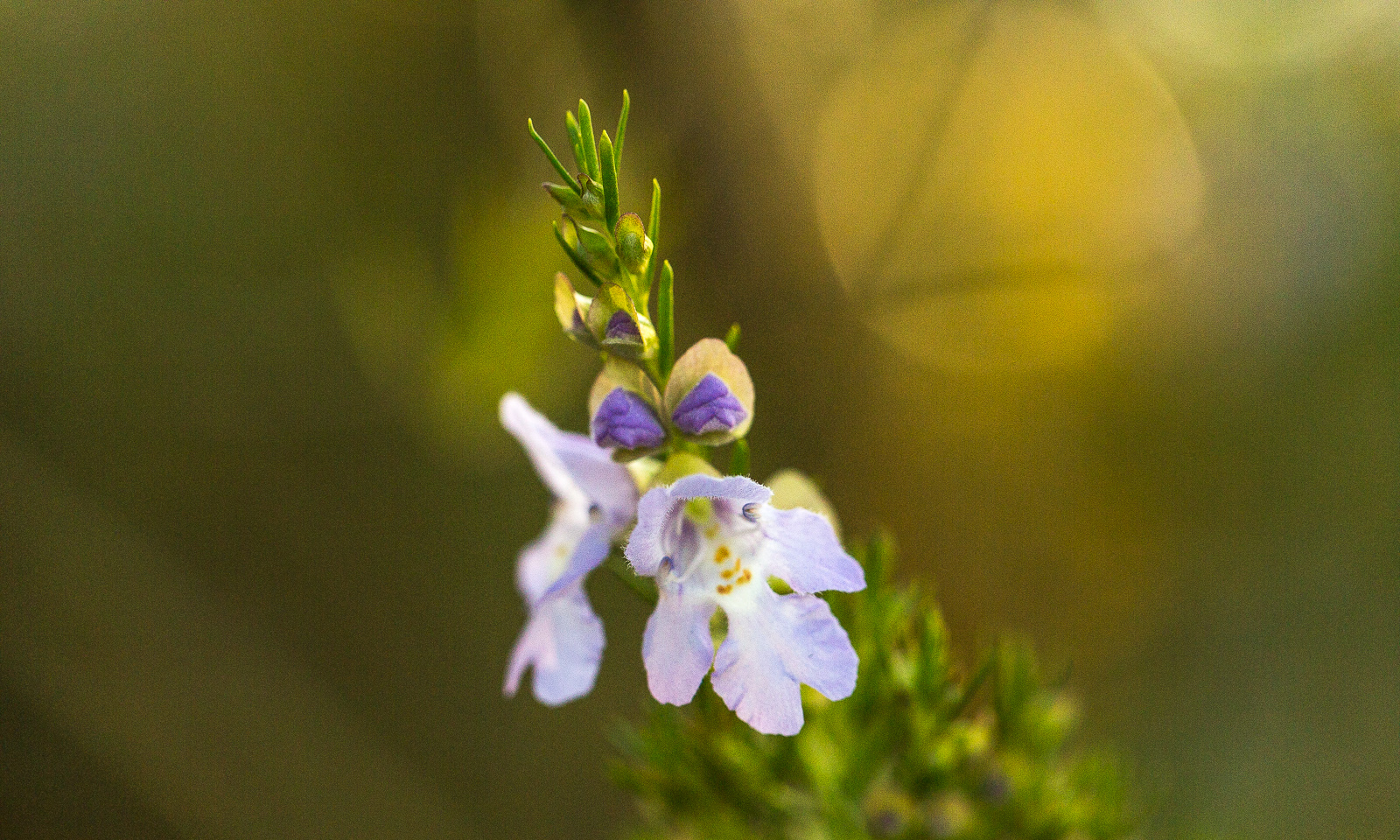
Some resources
A website with plenty of pictures of Lamiaceae in Australia both exotic and native as well as the butterflies and moths found feeding on them is Don Herbison-Evan’s Butterfly (Lepidoptera) site.
PlantNet, an online reference to Plants of News South Wales http://plantnet.rbgsyd.nsw.gov.au/
Clarke, I and Lee, H (2003) Name That Flower: The Identification of Flowering Plants, Melbourne Univ. Publishing, 2003 is fantastic for its descriptions of flowers and flower parts.
Trevor Wilson at the Botanic Gardens Sydney is doing a postdoc research on Prostanthera and was very helpful with IDs of plants from photographs.
Other Getting to know Plant Family pages – Rutaceae, Myrtaceae and more are on their way…
